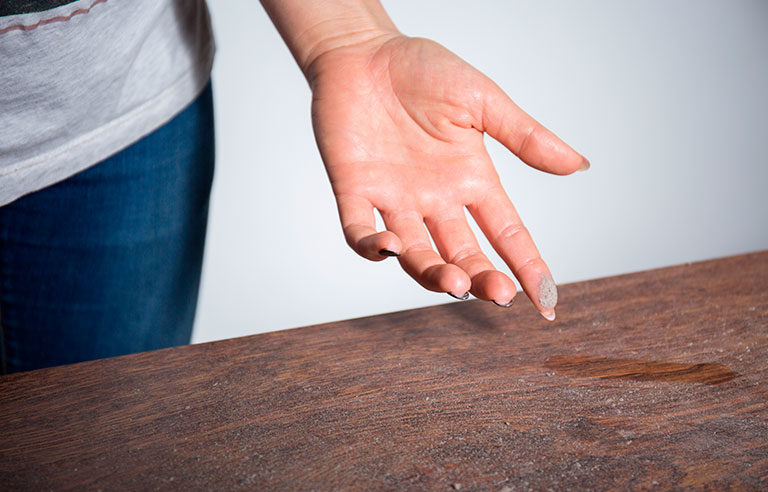Household dust contains harmful chemicals, researchers find

Photo: KatarzynaBialasiewicz/iStockphoto
Washington – Dust in your home isn’t just a nuisance – it may contain harmful chemicals released into the air by common products, according to a new study from Milken Institute School of Public Health at George Washington University.
Using data from 26 peer-reviewed papers, as well as an unpublished dataset of dust samples collected from homes in 14 states, researchers identified 45 potentially harmful chemicals used in consumer and household items such as cleaning products, vinyl flooring and cosmetics. They found that 90 percent of the dust samples contained 10 hazardous chemicals.
Other notable findings:
- Four classes of harmful chemicals are typically present in dust. The class with the highest concentration was phthalates, which are used to make cosmetics, toys, vinyl flooring, and other products, and which have been linked to lower IQ and respiratory problems in children.
- Phenols – which are found in cleaning products and other items, were the second type of chemical most often found in dust. Flame retardants and highly fluorinated chemicals, which are in non-stick cookware, were No. 3 and 4.
- DEHP – a phthalate – was the most commonly found chemical.
- The chemical with the “highest estimated intake” was the flame retardant TCEP, found in couches and electronics, among other products.
- The cancer-causing flame retardant TDCIPP, which is usually found in furniture and baby products, was present in samples.
People are exposed to chemicals when they inhale or ingest contaminated dust or absorb it through their skin, the researchers said. Young children are especially at risk because they crawl, play on the floor and put their hands in their mouths.
To lower exposure, experts recommend using a vacuum with a HEPA filter, washing hands frequently and not using products that contain hazardous chemicals.
“Harmful chemicals used in everyday products and building materials result in widespread contamination of our homes,” Veena Singla, co-author and staff scientist at the Natural Resources Defense Council, said in a press release. “These dangerous chemicals should be replaced with safer alternatives.”
The study was published Sept. 14 in the journal Environmental Science & Technology.
Post a comment to this article
Safety+Health welcomes comments that promote respectful dialogue. Please stay on topic. Comments that contain personal attacks, profanity or abusive language – or those aggressively promoting products or services – will be removed. We reserve the right to determine which comments violate our comment policy. (Anonymous comments are welcome; merely skip the “name” field in the comment box. An email address is required but will not be included with your comment.)

